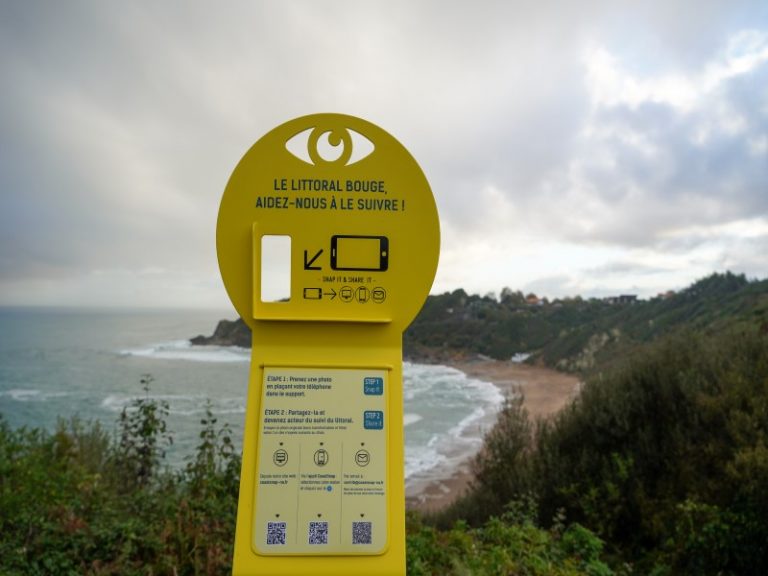
Inspired by an Australian initiative called CoastSnap, this regional participatory science project makes it possible, by controlling the angle of view and the panorama from a fixed point, to build up a large base of photos to observe the evolution of the coastline while raising citizens’ awareness of the eminently mobile nature of the coastal strip.
Through the CoastSnap observation posts in Nouvelle-Aquitaine, the project provides a participatory tool accessible to all for a better knowledge and awareness of the evolution of the coastline.
The CoastSnap initiative was launched in 2017 in Australia as a pilot project between the UNSW (University of New South Wales) Water Research Laboratory and the New South Wales (NSW) Government Department of Planning, Industry and Environment. The pilot project consisted of the installation of two CoastSnap stations on the beaches of northern Sydney, Australia. The objective of the pilot project was to develop algorithms to map coastal change from community images.
Today, the CoastSnap project is deployed in many countries around the world, including England, Spain, Portugal, Belgium, the Netherlands, Brazil, the United States, India, Mozambique, etc.
Lacanau, Capbreton and Saint-Jean-de-Luz before deployment on other sites…
Interested in this simple and innovative system, the team of Observatoire de la côte de Nouvelle-Aquitaine have decided to bring together a consortium of local partners to develop the project in the New Aquitaine region while joining the international CoastSnap network.
Financed within the framework of the 2015-2020 FEDER regional operational programme (European funds) and with the support of the Nouvelle-Aquitaine Region, the project now brings together the experience of BRGM and the Office national des forêts, both in the knowledge of the evolution of the Aquitaine coastline through the work carried out in the Observatoire de la côte de Nouvelle-Aquitaine (New Aquitaine Coastal Observatory) and in the setting up of information and awareness panels, as well as that of the Centre aquitain des technologies de l’information et électroniques (CATIE) in the field of digital technology (architecture, structure, data storage, image processing, human and cognitive factors)
The project has an experimental vocation, with the deployment of the CoastSnap system on three coastal sites of the Nouvelle-Aquitaine coast, in partnership with the local authorities of Lacanau, Capbreton and the Community of Municipalities of Maremne-Adour-Côte-Sud (MACS), as well as Saint-Jean-de-Luz and the Basque Country Agglomeration Community (CAPB).
The observation posts are located in :
- Lacanau-Ocean: on the belvedere (roof of the first-aid post) at the central beach.
- Capbreton: on Santocha beach, next to the heliport on the dune overlooking the beach.
- Saint-Jean-de-Luz: at Lafitenia, at the top of the cliff, at the car park next to the coastal path.
The aim is to install new CoastSnap observation stations in the region in the coming years and thus improve knowledge of the evolution of the Nouvelle-Aquitaine coastline while promoting a shared culture of risk.
How can you become an actor in coastal monitoring and thus participate in a better knowledge of this environment?
Why not combine business with pleasure during your next trip to the coast? By passing near a site equipped with a CoastSnap observation station, citizens are invited to take a photo of the beach and share it via a dedicated form, by email or from an application. This photo will be added to a citizens’ photo library of the coastline. Through its analysis, it will be possible to better understand the evolution of the coastline at different time scales.
What happens to the photo?
Once the photo has been shared, it joins a bank of citizen photos that are compared with each other and then analysed by scientists using different image processing algorithms developed by researchers from the international CoastSnap network and the Observatoire de la côte de Nouvelle-Aquitaine.
Thanks to repeated shots of the beach from the same fixed point, it is possible to follow the evolution over time of the position of the coastline, variations in beach level, vegetation, etc. This information contributes to a better understanding of the evolution of these sites and to the efficient and sustainable management of our beaches.
